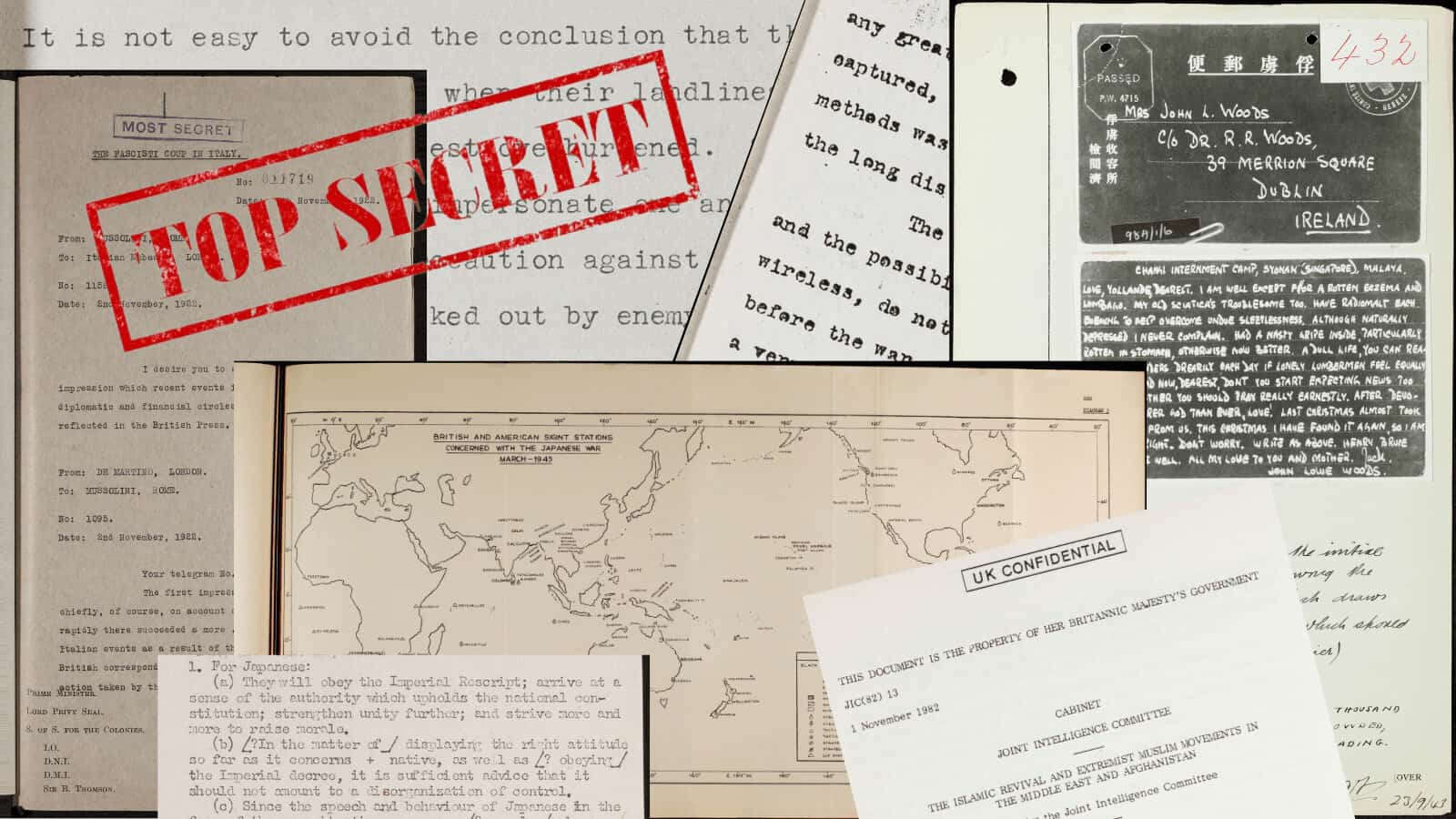|By Clem Delany, Acquisitions Editor, Gale Primary Sources|
It is now common knowledge that the German Enigma codes were broken during the Second World War in huts at Bletchley Park, and that this feat helped sway the tide of war in the Allies favour. Most people are also aware that Alan Turing was there, that early computers were being developed, and that after the war these codebreakers and the hundreds of people employed at Bletchley Park vanished into obscurity until the 1970s. These details have become part of popular culture: the shabby huts in the middle of a quiet countryside where great and secret things were happening providing the setting for the book Enigma by Robert Harris, or The Imitation Game starring Benedict Cumberbatch in tweed, and even a BBC Radio sitcom, Hut 33.
!['Chapter II, Sitz & Blitz: 1939-1940, work of the Air Section & Huts 3 & 6 at BP' ([c1946-1950]) HW 3/95, The National Archives (Kew, United Kingdom), Declassified Documents Online: Twentieth-Century British Intelligence](https://review.gale.com/wp-content/uploads/2022/03/TCBIF0007-C00004-M0000001-00020-1024x923.jpg)
The Government Code and Cypher School
The work that took place at Bletchley Park was part of the wartime labours of the Government Code and Cypher School, which later became Government Communications Headquarters, or GCHQ. Today, GCHQ makes statements in the press, publishes puzzle books and releases a yearly Christmas coded challenge aimed at school-age children. But for decades the men and women who worked on signals intelligence did so in total secrecy, part of the shadowiest of the shadowy UK security agencies.
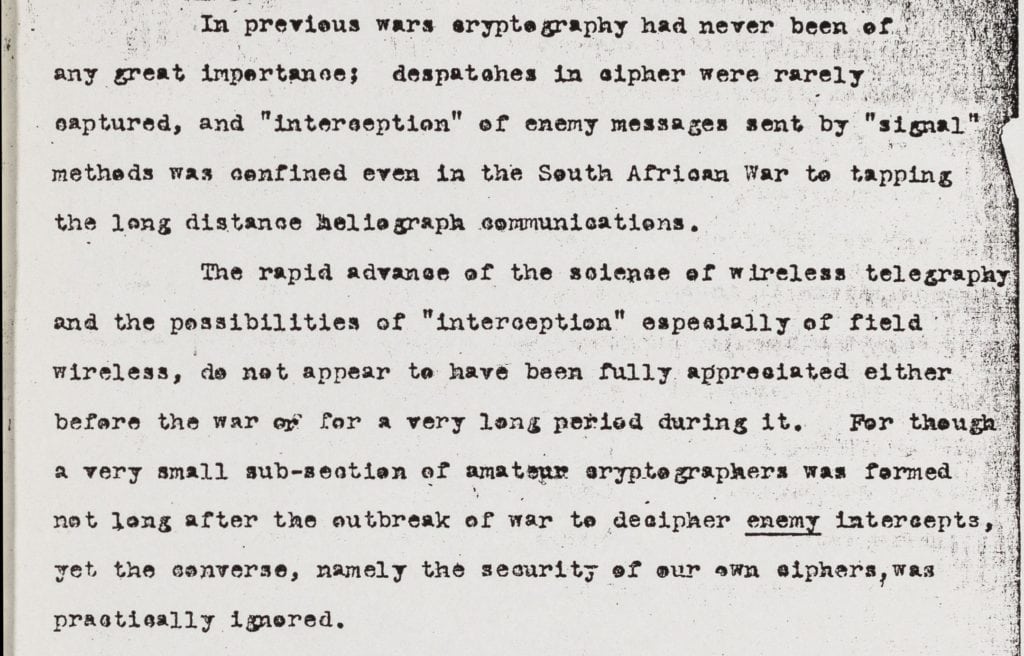
A Global Network
This is why the declassification of GCHQ files at the National Archives in the UK represents a chance for historians to reassess the events of the crucial period in which signals intelligence developed from monitoring heliograph communications during the Anglo-Boer War to the era of the Five Eyes, phone tapping scandals and a whole new world of cybersecurity. The Second World War was a crucial phase in this development, as the work of signals intelligence boomed into a dense global network of Y stations, regional bureaus, radio, and telegram transmissions – setting the stage for Cold War era espionage and deception.
A New Digital Resource
Declassified Documents Online: Twentieth Century British Intelligence, Monitoring the World brings an unparalleled collection of GCHQ material to a digital platform for the first time. Alongside Cabinet Office material from the Joint Intelligence Committee (part of the central intelligence machinery of the British government), this collection allows users at all levels to explore how, why and where signals intelligence was gathered, what impact it had on politics and warfare, and the evolution of surveillance and international relationships in the twentieth century.
Now available with OCR and HTR technology applied
From decades of intercepted decrypts to Cold War Joint Intelligence Committee reports that highlight key concerns and issues of the period, these files are now available with OCR and HTR technology applied – making them uniquely searchable and open for the first time.
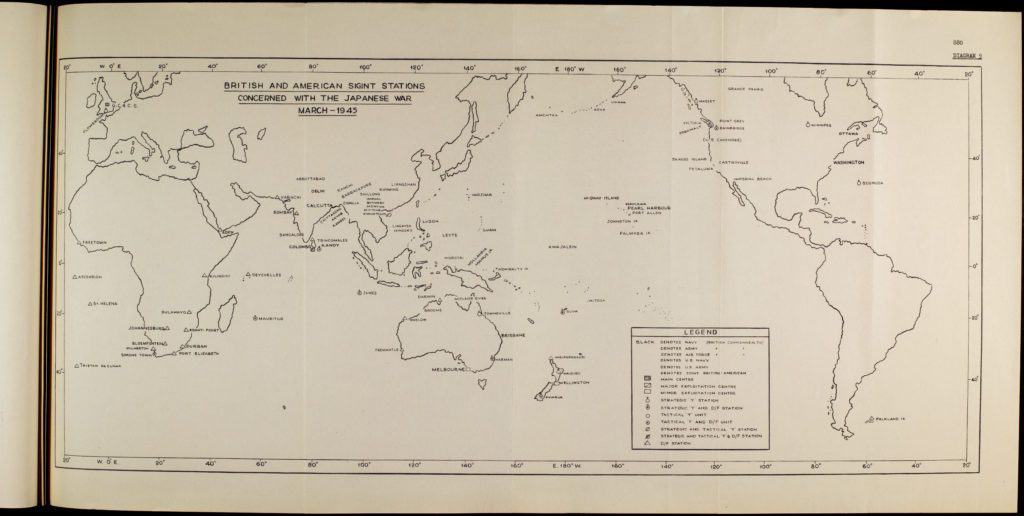
Beyond Enigma
There was, of course, much more to the work of the Government Code and Cypher School than breaking Enigma, or the codes of other nations. For example, coded messages in letters from prisoners of war or soldiers on active duty were studied and analysed, and reports and summaries compiled and shared on defences, infrastructure, communication methods, Orders of Battle, policy and procedure.
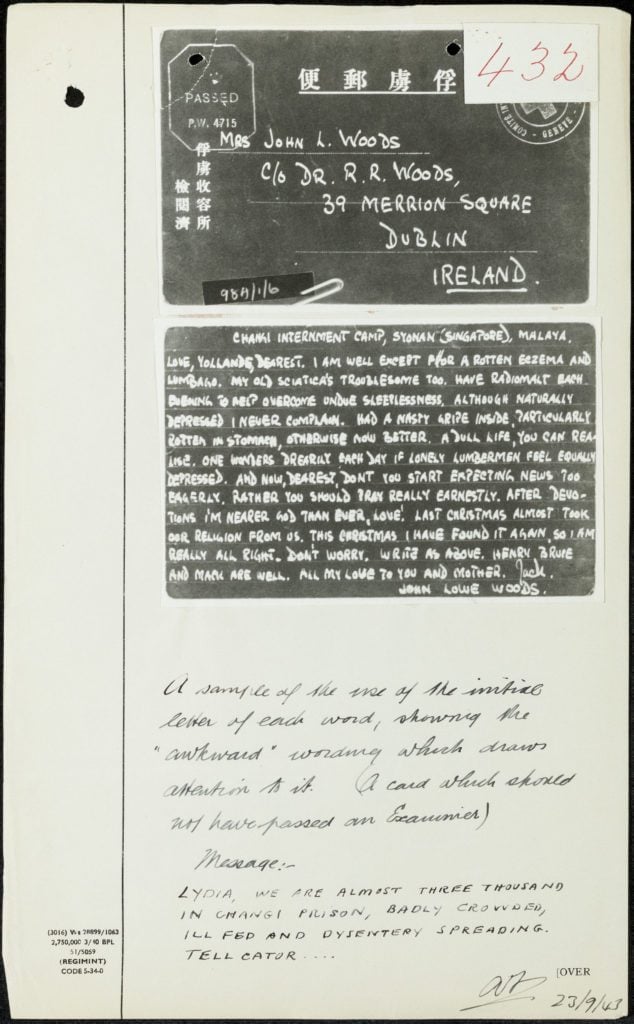
International Interception
Among the highlights of these series are the papers of regional signals intelligence bureaus – in particular those in Brisbane, India, the Middle East and the Far East. These bureaus covered their own theatres of war, but also provide insight into how these networks connected, and how the Allies, or their opponents, communicated with each other.
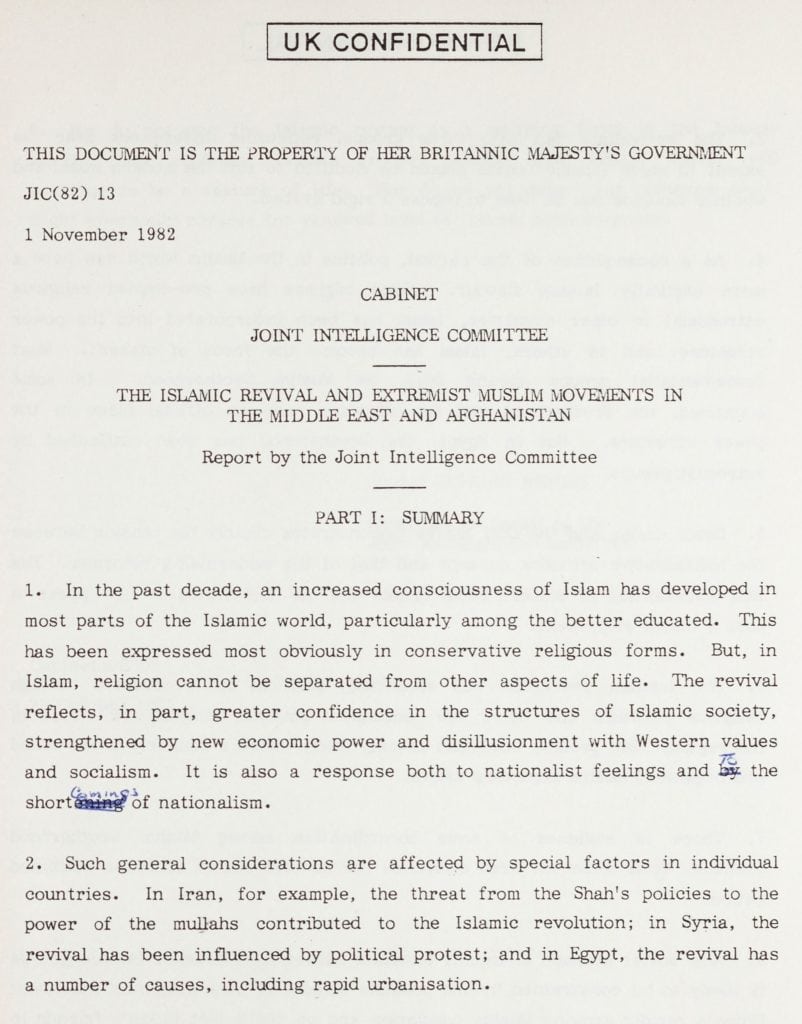
For example, the series of telegrams sent between Japanese commands in the immediate aftermath of the dropping of the atomic bombs and the Japanese surrender give a wealth of detail on the spread and activities of the imperial Japanese armies, as well as the rhetoric surrounding the surrender. The intercepted message (below) under the title ‘Reactions to Surrender’ from August 26, 1945, was sent from the Chief of Staff in Surabaya to the Head of the Political Affairs Department, Southern Area:
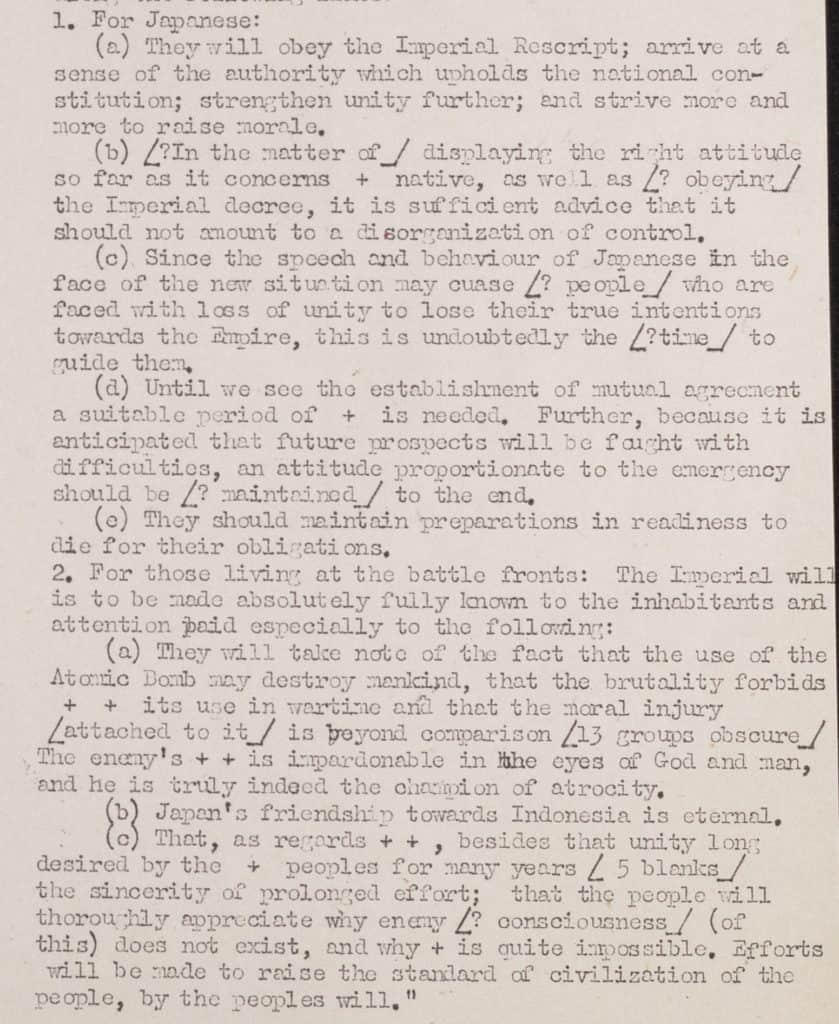
The HW 12 series
These regional papers are not the only GCHQ series of value to scholars of global and international history. The thousands of intercepted telegrams that make up the HW 12 series (Diplomatic Section and predecessors: Decrypts of Intercepted Diplomatic Communications (BJ Series)), running from 1919 to 1945, allow researchers to read into events as wide ranging as the Russian Civil War and subsequent Soviet negotiations for recognition; the occupation of Turkey and the Graeco-Turkish war; the ambitions and tussles of the Great Powers in the Middle East; Japanese ambitions in China and the Russian Far East; the rise to power of Mussolini; civil war in China and the Chinese relationship with foreign powers; civil war in Afghanistan and Russian penetration; and the Kellogg-Briand non-aggression Pact of 1928.
High Levels of Interception During WWII
The intense levels of interception taking place from 1939-1945 are reflected in the volumes of material from that period, the telegrams collected there including issues of trade and commerce, evacuations and deportations, troop movements, international alliances, and rumours and hearsay around events in all theatres of war.
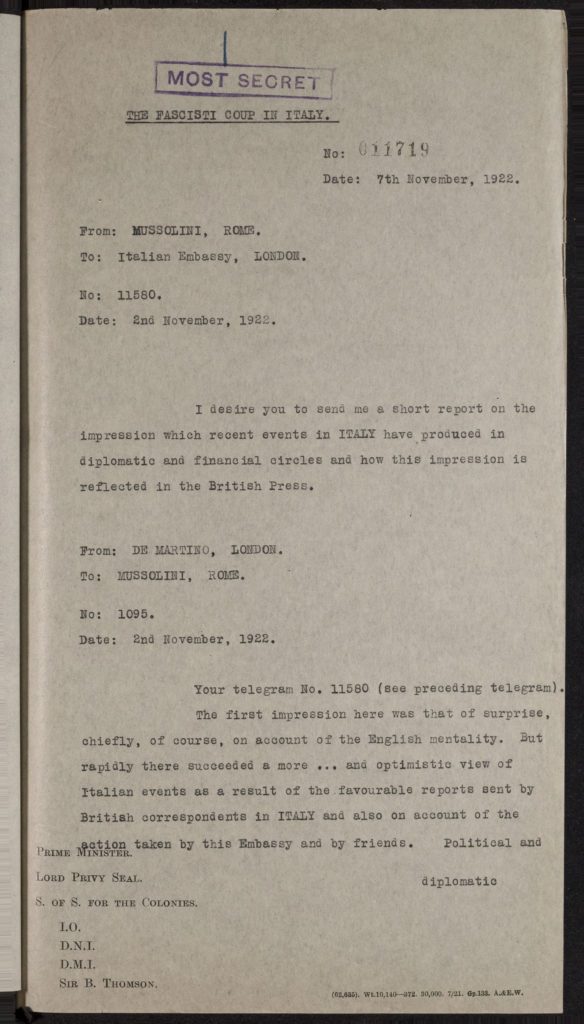
Elsewhere, the application of gathered intelligence and forward planning can be seen, for example, in anticipation of the intensification of bombing that was the London Blitz from September 1940, found in this report by Hut 3 at Bletchley Park on the German Army & Air Force based on early Enigma decrypts from March of that year:
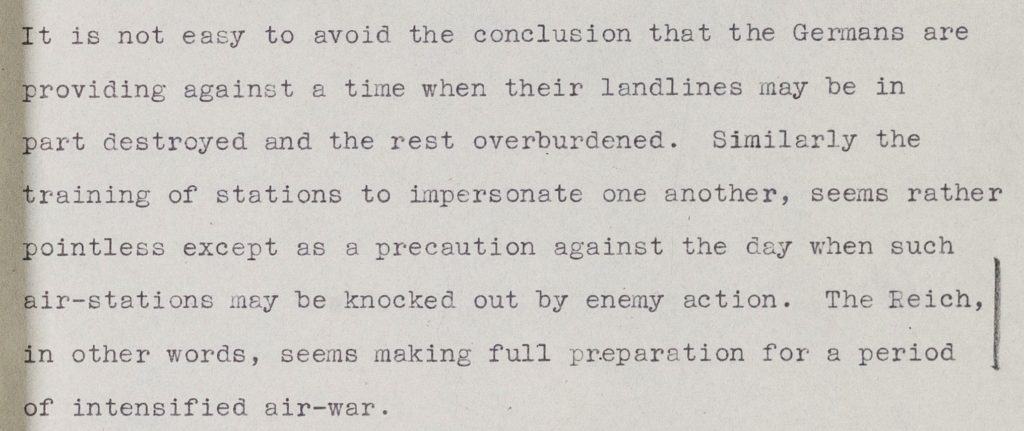
The files also contain information on events on the ground around the world, and detailed insight into the experience of warfare, from the minutiae of life at Bletchley Park, to intelligence gathered on the German experience of defeat in 1945:

The Full Depth and Breadth of Signals Intelligence
The volume of material presented here, nearly 700,000 images, means that researchers have access to the full depth and breadth of twentieth-century signals intelligence, and through it a window into the tangled web of diplomacy and conflict, of Great Powers and the end of Empires, the rise and fall of political absolutes, and the sometimes shaky ground of international links and co-operation.
If you enjoyed reading about the second module in Gale’s Declassified Documents Online: Twentieth Century British Intelligence series, you might like:

